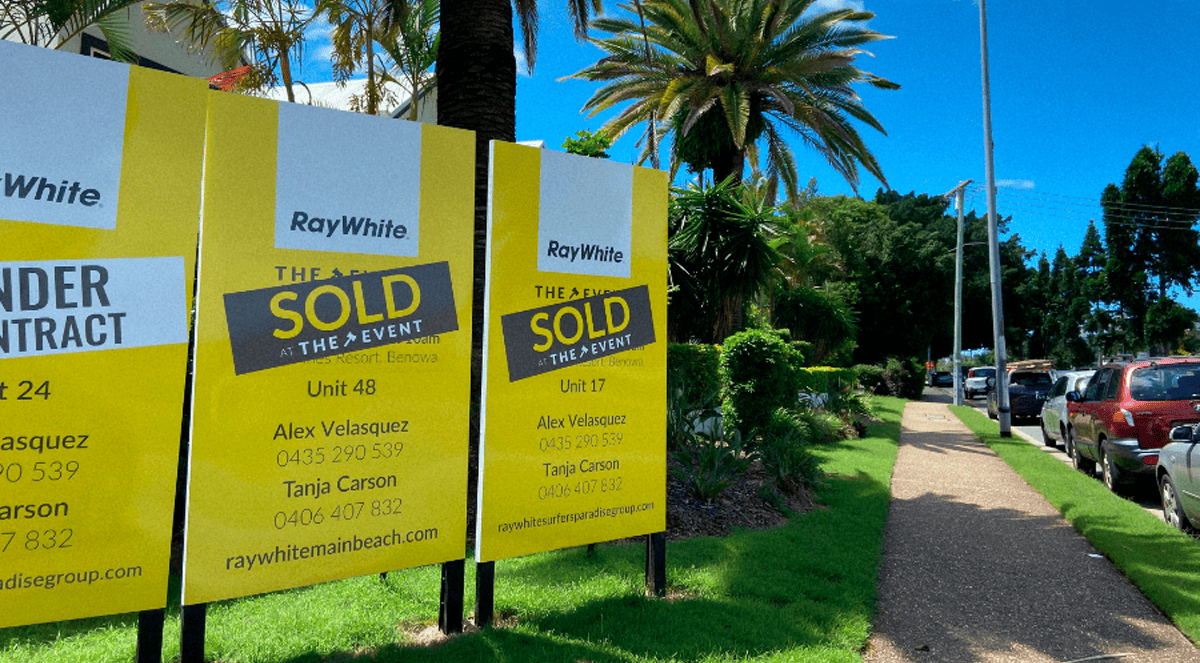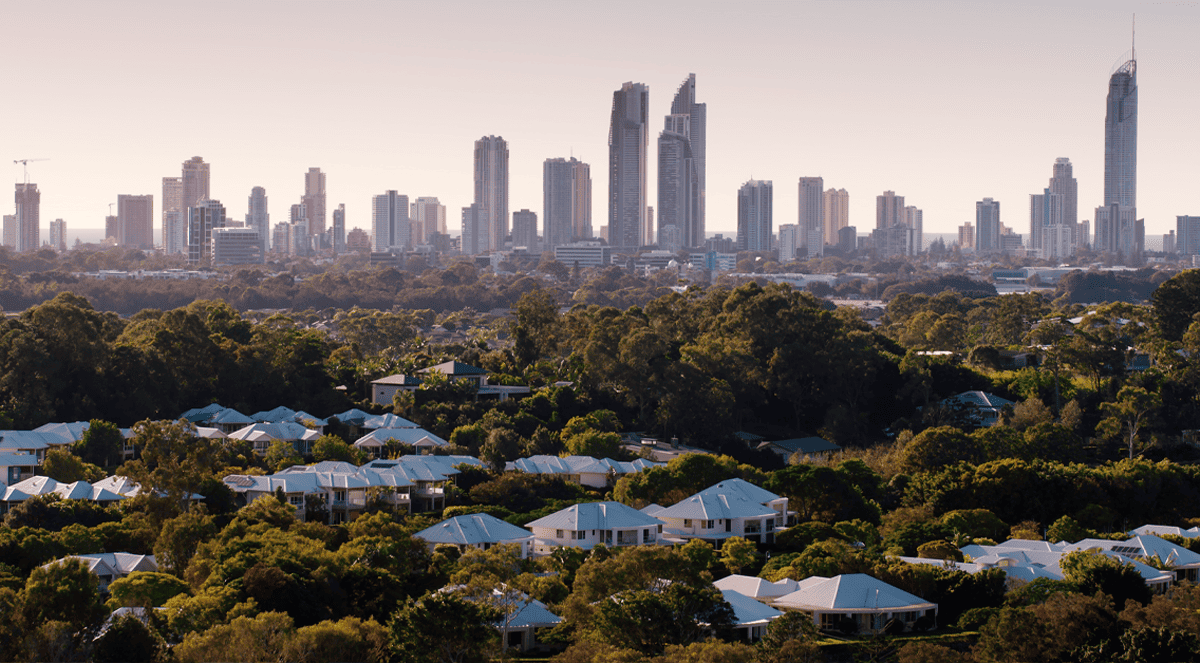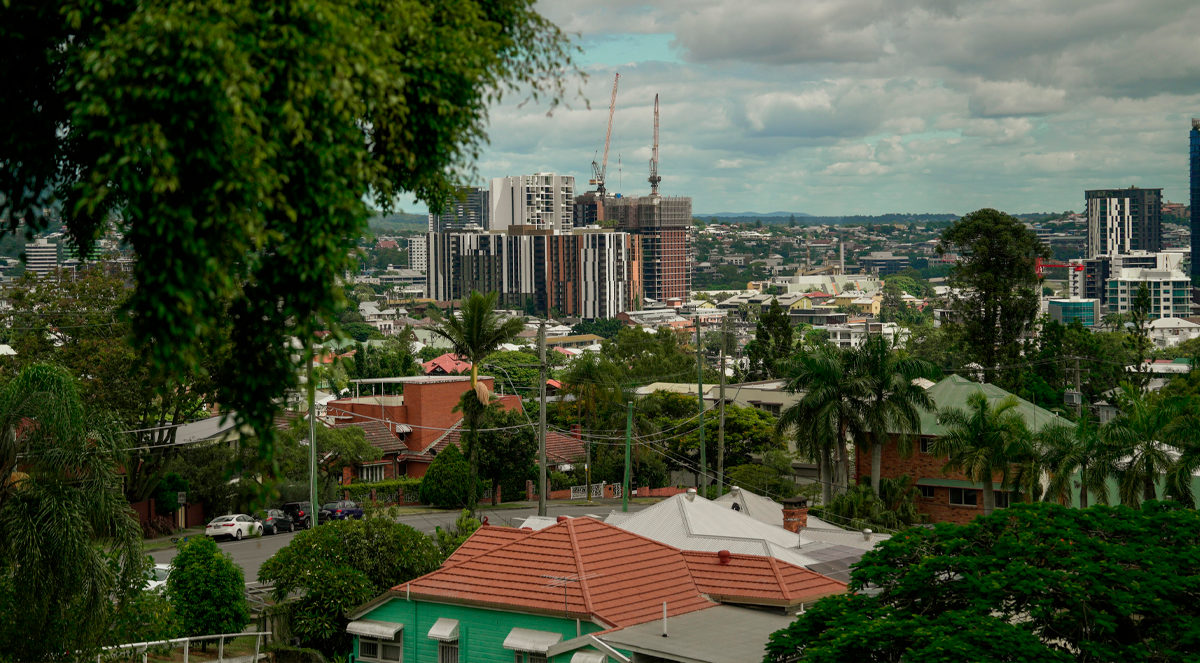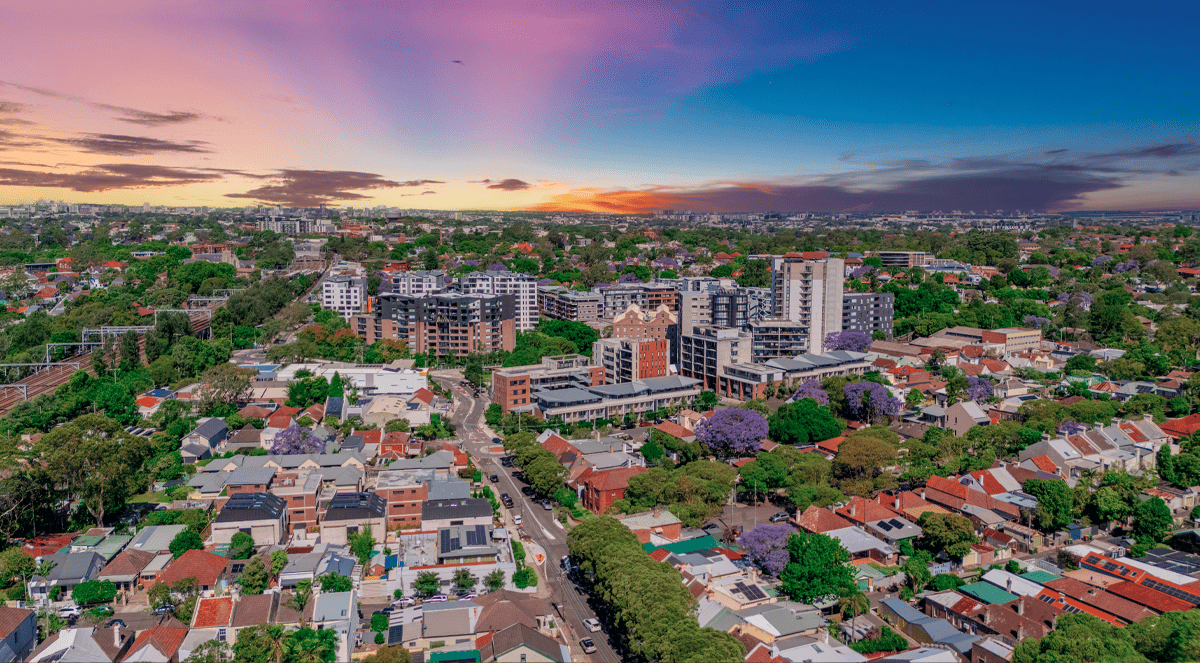.png)
Image from AFR/Craig Sillitoe
KEY POINTS
- “Rentvesting” is rising as a strategic alternative to traditional homeownership, with Millennials and Gen Z making up over half of last year’s property investors
- “Rentvestors” tend to target suburbs with strong capital growth or high rental yields, with some investors opting for a hybrid or balanced mix of both strategies
- While it offers tax benefits, flexibility, and a potential path to homeownership, rentvesting often requires more savings, research, and emotional resilience
One of Australia’s leading property analysts has mounted a strong case for the strategy of “rentvesting”, particularly for younger Australians attempting to get a foot on the property ladder.
In an economic update called “Why Rentvesting Makes Sense”, Nerida Conisbee, the Chief Economist at national real estate chain Ray White, has also revealed her lists of top locations for investors seeking capital growth and for those seeking cashflow.
Demographic reality
Nerida Conisbee says only 55% of Millennial Australians (those aged between 25-39) own their home today - as compared to 70% of Baby Boomers at the same age in 1991 and 65% of Gen Xers in 2006.
She also points out that over 40% of Millennials live in rental accommodation, compared to around 30% for previous generations at the same age.
“This dramatic shift reflects more than just affordability challenges - it represents a fundamental change in how young Australians must approach homeownership,” the Ray White Chief Economist says.
“The traditional path of saving for a deposit while living at home, then buying in the same city where you work, has become increasingly unviable.
“Rentvesting,” she says, “has emerged as the pragmatic response to this new reality.”
“Rentvesting” is a property strategy where individuals rent the home they live in, while simultaneously purchasing an investment property in a different location, often at a more affordable price point or with a higher growth potential.
This allows people to live where they prefer (perhaps close to work, family and friends), while still building wealth through property investment.
“Remarkably, over 50% of property investment purchases in the past year were made by Millennials and Gen Z, according to Commonwealth Bank data.”
Advantages
Ray White’s Nerida Conisbee says the appeal of rentvesting extends beyond just affordability.
“It offers genuine strategic advantages that traditional homeownership cannot match,” she says.
“Young professionals can live in vibrant inner-city areas with superior amenities, shorter commutes, and dynamic social scenes while building wealth through property investment in growth markets.
“This approach also provides career flexibility.
“Rather than being anchored to one location by a mortgage, rentvestors can relocate for career opportunities while maintaining their investment portfolio.”
Ms Conisbee says the “financial mechanics” of rentvesting work very well in Australia's current market conditions.
“Investment property loans, while requiring higher deposits and carrying slightly higher interest rates, offer significant tax advantages through negative gearing and depreciation benefits,” she says, which “...can substantially improve the investment's net return.”
Strategies
Ray White’s Nerida Conisbee says rentvestors typically choose between two approaches.
The first focuses on suburbs showing potential for significant capital appreciation - usually areas experiencing population growth, infrastructure development, or economic transformation.
“The objective is straightforward: when it comes time to sell, the difference between purchase and sale price helps bridge the gap between your budget and your desired home price,” she says.
Looking at affordable areas with median prices below $750,000, Ms Conisbee says suburbs in Perth dominate.
“Areas like Middle Swan-Herne Hill have recorded impressive gains of over $20,000 in three months alone, representing a growth rate of 3%,” she says.
“What's particularly striking is that these growth suburbs maintain median prices below $750,000, making them accessible to first-time investors while still delivering substantial capital appreciation.”
However, the Ray White Chief Economist warns that properties in growth areas can often provide initially modest rental returns, which can require investors to contribute additional funds to cover mortgage shortfalls.
“This strategy suits investors with stable incomes and longer investment horizons,” she says.
The other main rentvesting approach is a high rental yield strategy.
This prioritises cash flow, targeting suburbs with strong rental returns.
“This strategy appeals to investors preferring reliable income streams and those wanting to use additional cash flow to accelerate their savings for future property purchases,” Ms Conisbee says.
“High-yield properties typically exist in regional centres, areas with specific employment anchors, or locations where housing demand exceeds supply,” the Ray White Chief Economist says.
Her list of current top performers includes the tourist town of Mallacoota in Victoria’s East Gippsland (21.9% yield), followed by Coolgardie in Western Australia (14.9% yield) and Port Pirie in South Australia (10.0% yield).
“The challenge with yield-focused investing lies in identifying sustainable high-yield markets,” Nerida Conisbee warns.
“Some areas offer attractive returns due to economic distress or declining populations—these represent value traps rather than investment opportunities.
“Successful yield investors focus on markets with genuine rental demand drivers and stable economic fundamentals.”
Best of both worlds
Nerida Conisbee points out that many successful rentvestors have adopted a so-called “balanced” or “hybrid” strategy, targeting areas offering solid capital growth potential alongside good rental yields.
“Hybrid markets often exist in established regional centres with diverse economies, growing populations, and reasonable infrastructure,” she says.
“These areas typically offer more predictable returns than extreme capital gains markets while providing better long-term wealth building than pure yield plays.”
As examples, she suggests investors look at towns like Derby in Western Australia’s north or Wandoan in Queensland’s Western Downs, which she says both provide yields of around 9%.
In the end….
Ray White’s Nerida Conisbee warns that being a rentvestor isn’t for everyone.
“The emotional challenge of being a landlord while remaining a tenant shouldn't be underestimated,” she notes.
“Dealing with difficult tenants, maintenance issues, and vacancy periods while paying rent elsewhere requires both financial buffers and psychological resilience.”
There’s also the fact that investment property loans typically require 20% deposits, compared to the 2% to 10% deposits that first-home owner-occupiers can often qualify for.
“Investing in different states or regions from where you live can provide portfolio balance, though it requires greater research and potentially higher management costs,” she warns.
On the other hand, Nerida Conisbee points out “Australian capital city property markets will likely remain challenging for traditional first-home buyers.”
“Many successful rentvestors transition to owner-occupier status within five to ten years, using accumulated equity to purchase in their preferred location,” she says.
“For young Australians priced out of their preferred locations, rentvesting offers a viable alternative to indefinite renting or compromising on lifestyle.”
Stay Up to Date
with the Latest Australian Property News, Insights & Education.




.png?width=292&height=292&name=Copy%20Link%20(1).png)
 SIGN UP FOR FREE NEWSLETTER
SIGN UP FOR FREE NEWSLETTER





.jpg?width=1920&height=1080&name=Warning%2c%20You%20Might%20Be%20Facing%20Higher%20Taxes%20Soon%20(1).jpg)





.png?width=1920&height=1080&name=Rate%20Drops%20Signal%20BIGGEST%20Property%20Boom%20in%20DECADES%20(1).png)

.jpg?width=1920&height=1080&name=Labor%20vs%20Liberal%20These%20Housing%20Policies%20Could%20Change%20the%20Property%20Market%20Forever%20(1).jpg)
.jpg?width=1920&height=1080&name=QLD%20Slashes%20Stamp%20Duty%20Big%20News%20for%20Investors%20%26%20Home%20Buyers%20(1).jpg)
.jpg?width=1920&height=1080&name=Trump%20Just%20Slapped%20Tariffs%20%E2%80%93%20Here%E2%80%99s%20What%20It%20Means%20for%20Australia%20(1).jpg)
.jpg?width=1920&height=1080&name=Federal%20Budget%202025%20More%20Debt%2c%20No%20Housing%20%E2%80%93%20Here%E2%80%99s%20What%20You%20Need%20to%20Know%20(1).jpg)
.jpg?width=1920&height=1080&name=Australias%20Housing%20Crisis%20is%20about%20to%20get%20MUCH%20Worse%20(New%20Data%20Warns).jpg)
%20(1).jpg?width=1920&height=1080&name=Australias%20RENTAL%20CRISIS%20Hits%20ROCK%20BOTTOM!%20(2025%20Update)%20(1).jpg)
%20(1).png?width=1920&height=1080&name=Is%20Adelaide%20Still%20a%20Good%20Property%20Investment%20(2025%20UPDATE)%20(1).png)
.jpg?width=1920&height=1080&name=RBA%20Shocks%20with%20Rate%20Cuts!%20What%E2%80%99s%20Next%20for%20Property%20Investors%20(1).jpg)
%20(1).jpg?width=1920&height=1080&name=I%20Predict%20The%20Feb%20Rate%20Cut%20(My%20Price%20Growth%20Prediction)%20(1).jpg)
.png?width=1920&height=1080&name=Why%20Property%20Prices%20Will%20Rise%20in%202025%20Market%20Predictions%20(1).png)
.jpg?width=1920&height=1080&name=Why%20Investors%20Are%20Choosing%20Apartments%20Over%20Houses%202%20(1).jpg)
.jpg?width=1920&height=1080&name=Why%20Rate%20Cuts%20Will%20Trigger%20A%20Property%20Boom%20(1).jpg)
.jpg?width=1920&height=1080&name=Retire%20On%202Million%20With%20One%20Property%20(Using%20SMSF).jpg)
.jpg?width=1920&height=1080&name=4%20Reasons%20Why%20You%20Should%20Invest%20in%20Melbourne%20Now%20(1).jpg)
%20(1).jpg?width=1920&height=1080&name=Old%20Property%20vs%20New%20Property%20(Facts%20and%20Figures%20Revealed)%20(1).jpg)
%20(1).jpg?width=1920&height=1080&name=Will%20The%20New%20QLD%20Govt%20Create%20a%20Property%20Boom%20or%20Bust%20(My%20Prediction)%20(1).jpg)
%20Scott%20Kuru%20(1).jpg?width=1920&height=1080&name=Inflation%20Hits%20Three-Year%20Low%20(Will%20RBA%20Cut%20Rates%20Soon)%20Scott%20Kuru%20(1).jpg)
.jpg?width=1920&height=1080&name=How%20to%20Buy%20Investment%20Property%20Through%20SMSF_%20The%20Ultimate%20Guide%20(1).jpg)
.jpg?width=1920&height=1080&name=Victoria%20Slashes%20Stamp%20Duty%20Melbourne%20Set%20to%20Boom%20Scott%20Kuru%20(1).jpg)
.png?width=1571&height=861&name=Are%20Foreign%20Buyers%20Really%20Driving%20Up%20Australian%20Property%20Prices%20(1).png)
.jpg?width=1920&height=1080&name=The%20Single%20Factor%20That%20Predicts%20Property%20Growth%20Regions%20(1).jpg)
%20Scott%20Kuru%20(1).jpg?width=1920&height=1080&name=My%20Prediction%20On%20Rates%20%26%20Negative%20Gearing%20(Market%20Crash)%20Scott%20Kuru%20(1).jpg)

-1.png?width=1920&height=1080&name=Major%20Banks%20Cut%20Rates%20Will%20RBA%20Follow%20Suit%20(Sept%20Rate%20Update)-1.png)
%20Scott%20Kuru-1.png?width=1920&height=1080&name=Rate%20Cut%20Coming%20What%20New%20Zealands%20Move%20Means%20for%20Australia%20(Sept%20Prediction)%20Scott%20Kuru-1.png)
%20(1).jpg?width=1920&height=1080&name=Buy%20when%20the%20interest%20rates%20are%20high!%20(Why%20you%20must%20buy%20now!)%20(1).jpg)
.jpg?width=1920&height=1080&name=Carms_Revised%20Taxes%20Due%20Aug%209%20YT%20Thumbnail02%20(1).jpg)
.jpg?width=1920&height=1080&name=Carms_Too%20Little%20Too%20Late%20Aug%207%20YT%20Thumbnail01%20(1).jpg)









.jpg?width=1920&height=1080&name=Carms_Rate%20Drop%20In%20July%20Jun%2010%20YT%20Thumbnail02%20(1).jpg)
.jpg?width=1920&height=1080&name=Carms_Own%20a%20Property%20V6%20Jun%205_YT%20Thumbnail%20(1).jpg)









.png?width=1920&height=1080&name=Artboard%201%20(3).png)






.jpg?width=1920&height=1080&name=YT%20thumbnail%20%20(1).jpg)

